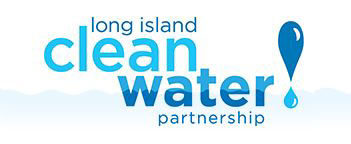The Long Island Clean Water Partnership
 Huntington-Oyster Bay Audubon Society has joined with Group for the East End, Long Island Pine Barrens Society, The Nature Conservancy and other organizations as a partner in the Long Island Clean Water Partnership. The partnership is a grassroots initiative to restore and protect Long Island's water resources on a comprehensive level.
Huntington-Oyster Bay Audubon Society has joined with Group for the East End, Long Island Pine Barrens Society, The Nature Conservancy and other organizations as a partner in the Long Island Clean Water Partnership. The partnership is a grassroots initiative to restore and protect Long Island's water resources on a comprehensive level.
For more information:
Frequently Asked Questions
The Clean Water Partnership is a coalition of Long Island’s leading conservation organizations including Citizens Campaign for the Environment, Group for the East End, Long Island Pine Barrens Society and The Nature Conservancy. Together, we are partnering and collaborating with scientists, public officials, community members, and a number of other stakeholders in order to implement solutions to the decline in water quality on Long Island.
Aquifer means “water bearing rock”. It is an underground layer of unconsolidated rock and soil materials that carry and transmit groundwater. Long Island has a federally designated sole-source aquifer which means that 100% of our drinking water for 2.8 million Long Islanders in Nassau and Suffolk Counties comes from the groundwater.
Drinking water and surface waters share a vital connection. On Long Island, underground aquifers store our only source of fresh drinking water for Nassau and Suffolk Counties. These aquifers are not static; they slowly flow from high ground to low, recharged by rainfall, and they supply the majority of fresh water entering our streams, lakes, and bays.
Science conclusively shows deteriorating water quality in Long Island’s groundwater. Nitrogen pollution from sewage, most notably aging sewer and septic systems, flows from our aquifers into our bays and harbors, damaging salt marshes, causing harmful algae blooms, reducing fish and shellfish populations and closing our beaches. Additionally, 117 pesticides have been detected in our groundwater as well as toxic and volatile organic compounds, and pharmaceutical drugs.
Many government agencies share responsibility for protecting Long Island’s waters resources. As a result, water quality protection has never been effectively centralized. No single agency has final responsibility or public accountability for restoring and maintaining clean water. Water quality standards, rules, regulations, policies and programs derive from an array of local, regional, state and federal agencies. For example, in Nassau County alone, 40 separate entities distribute drinking water.
There are many ways to fund water quality improvement: tax credits, upgrade incentives, sales tax, bond act, water rate adjustments and many more. Once new water quality standards are set and enforcement has been provided for, we’ll know what funding mechanisms make the most sense. One thing’s for sure: the cost of fixing the water problem will be far less than the cost of destroying Long Island’s drinking water and surface waters.
Individuals can join the Partnership by visiting the website: www.longislandcleanwaterpartnership.org. Once a member, the site will allow you to send a letter to your elected officials asking them to make clean water a priority. Partners can stay informed by liking us on Facebook and following us on Twitter. Lastly, everyone should spread the word and talk about these issues with family, friends and fellow Long Islanders.
